Bats
Latin: (unknown)
Family: (unknown)
Order: Chiroptera
English: (unknown)
Indonesian: (unknown)
The mammals visiting my garden are bats, rats/mice and cats. Of course humans (Homo sapiens) is another species that often can be seen there, but I think it is better not to include this species in this context.
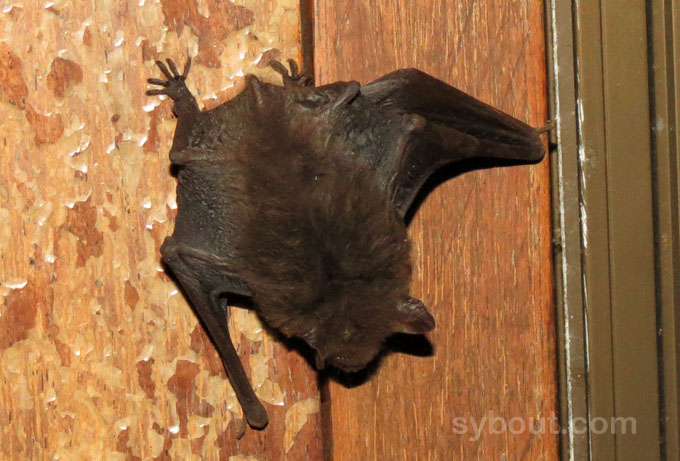
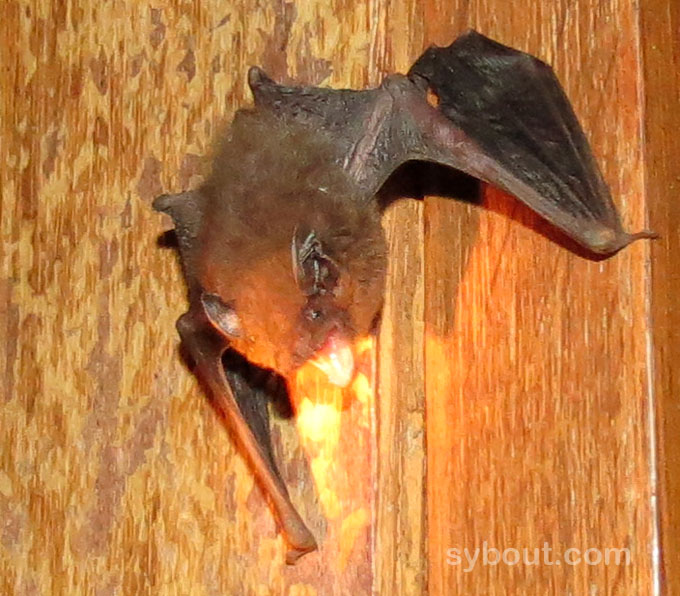
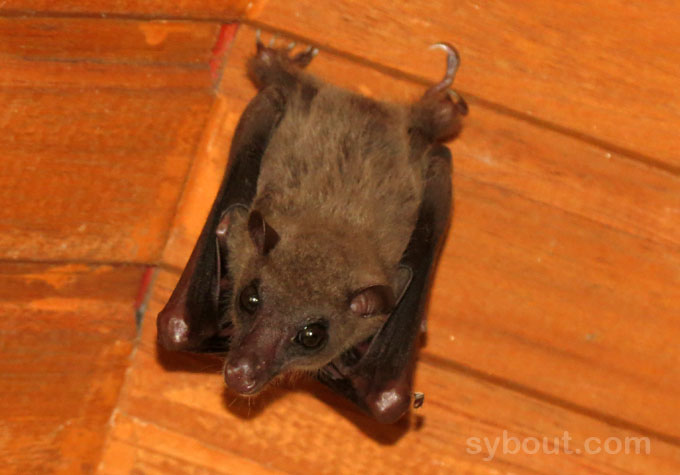
Just after sunset when the last swifts are still in the sky, the first tiny bats appear and fly around the roof of my house. These small bats are the size of a big butterfly and seem to eat insects. In the daytime they rest somewhere under the roof of our house, but I haven't found out yet where.
Later in the evening I sometimes see bat species that are larger in size and fly around our mango tree.
They seem to like the fruits even when they are not ripe yet.
There are about 175 bat species in Indonesia and some sources say that 62 of these live in Sulawesi.
Unfortunately I have no idea how to identify the bats visiting my garden. The only thing I found out is that they are different in size.
It sometimes happens that a bat rests in the day time in one of our trees or under the eve of a
terrace roof. This probably means that it got lost or confused, as they never rest for two nights in a row in these relatively unprotected places. These rare moments
are the only possibility for me to make a picture of them.
Shrew?
Latin:(unknown)
Family: (unnown)
Order: Rodentia
English: (unknown)
Indonesian: (unknown)
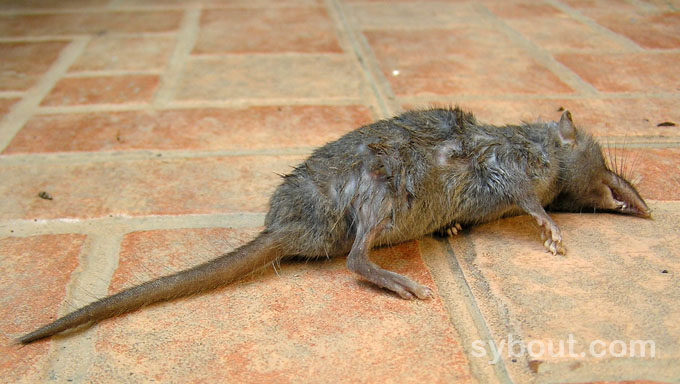
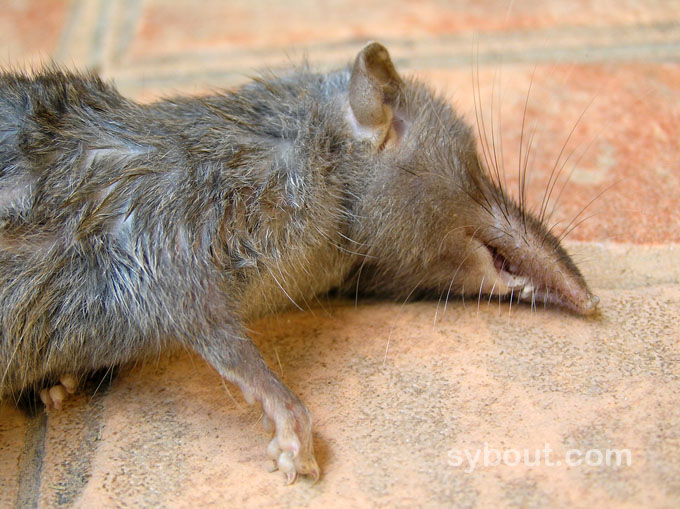
Rats and mice are usually active during the night and hard to catch in a picture. Therefore the only photos I could make of these animals were made after they died.
I have been searching the internet for information on rat/mouse-like animals in South Sulawesi and cannot find out if the dead animal (caught by our cat) in the pictures
above here is a shrew or a type of rat.
Because of the long snout my first guess was shrew, but later I got confused. It has white teeth and a long tail with widely spaced long hairs.
Rat
Latin: Rattus Sp.
Family: Muridae
Order: Rodentia
Indonesian: Tikus
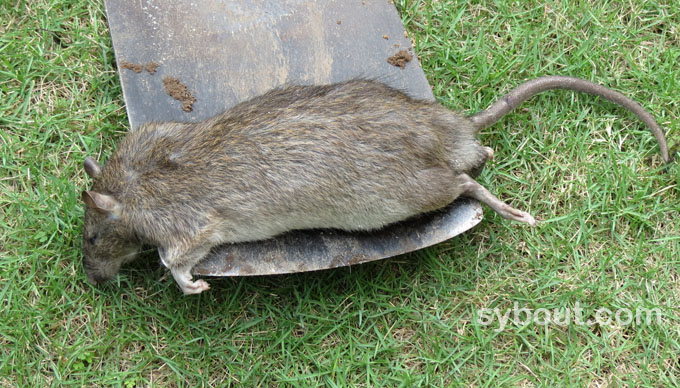
Luckily we don't often have rats visiting our garden, but it happens. All over town there are rats living near gutters and canals, so there is always a chance that at some point they check your garden for something edible. I was surprised to discover that rats sometimes visit our mango tree and eat the still unripe mangos. I know that pregnant women sometimes go for strange food. Does the same go for pregnant rats, or do just all rats like raw fruits?
Cat
Latin: Felis catus
Family: Felidae
Order: Carnivora
Indonesian: Kucing
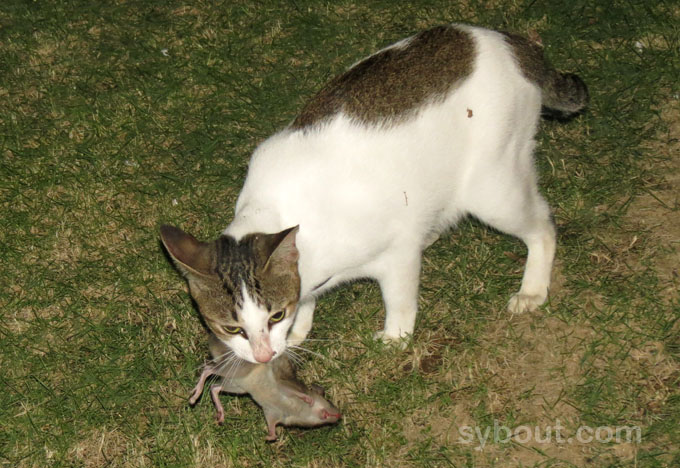
Our first cat was a female living somewhere in our area that decided to deliver her babies in a little cupboard in our backyard. Since then we always have had one or more cats living with us. They are interesting animals, all with
their own personality. Though most cats sleep a lot and like to go their own way, they can be nice company. And a good thing is that they control the number of rodents visiting our garden. Next to rats and mice our cat likes to catch (and eat)
skinks, geckos and locusts.
Most cats in Indonesia have a short, kinked tail. Even when you think that you have found a
cat with a perfectly straight tail, you often still can feel a little twist in it. From own observation I know that these cats were born like this. So it is not the result of an accident or the "cutting off" as some people believe. The most acceptable reason I have heard is that the strange shaped tails are the result of inbreeding. Most cats in Indonesia walk freely around their home and that is where they meet other cats. They don't know (or don't care?) who of these cats are their close relatives.